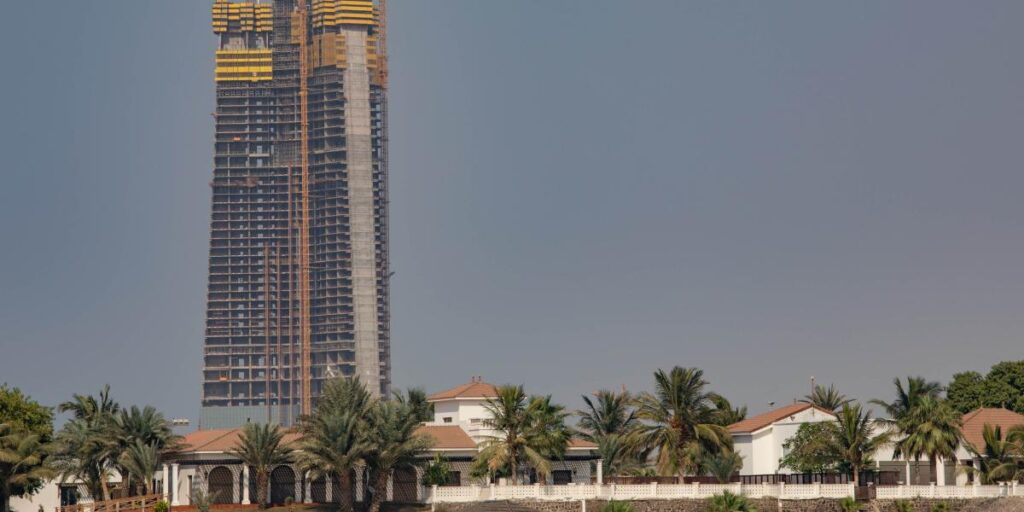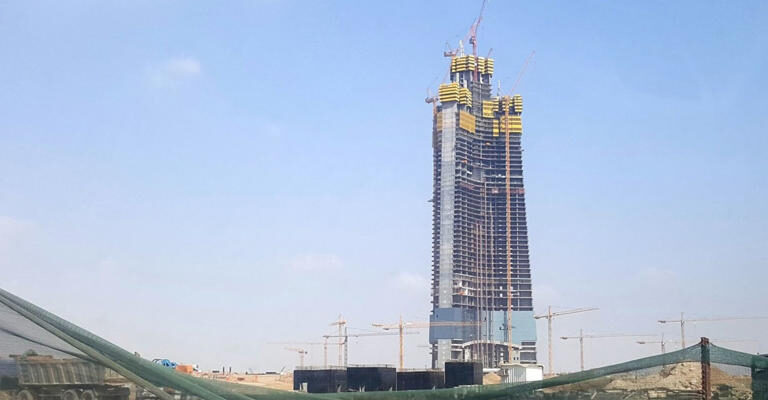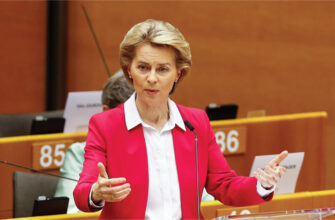- Why did Saudi Arabia decide to build the world’s tallest building?
- The vision behind the project
- How the decision was made: political, economic, and symbolic factors
- Design and engineering: how do you build a kilometer-high tower?
- Key engineering hurdles
- Timeline and milestones
- Table: Key project milestones
- Financing the dream: who pays for a kilometer-high tower?
- Urban planning and the Jeddah Economic City
- Environmental and social considerations
- Controversies and criticisms
- What breaking the kilometer barrier would mean
- Lessons from other supertalls
- What comes next for Jeddah Tower?
- Short checklist for what to watch
- Why the world is watching
- Conclusion
- Explore more
Why did Saudi Arabia decide to build the world’s tallest building?
When you first hear about Jeddah Tower, it sounds like a bold, almost audacious idea: a building taller than anything humans have ever constructed, reaching beyond a full kilometer into the sky. But this wasn’t a whim. Saudi Arabia decided to build Jeddah Tower as part of a deliberate strategy to reshape its economy, diversify its global image, and signal technological ambition. The project ties into broader plans to move beyond oil revenues, to create new urban centers and tourist destinations, and to establish the Kingdom as a hub of modern engineering and architecture. It was both a political statement and an economic bet — one that drew engineers, architects, investors, and skeptics into a single, massive endeavor. How to find the cheapest southwest flights
The vision behind the project
The idea of breaking the kilometer barrier is about more than breaking records. Saudi Arabia saw Jeddah Tower as a vertical city — a mixed-use space with residences, offices, hotels, and observation decks stacked, floor by floor, in a single slender superstructure. This approach fits neatly with the Kingdom’s Vision 2030 ambitions: diversify the economy, attract international visitors, and stimulate sectors like real estate, hospitality, and high-tech construction. A one-kilometer tower is an icon that says the country is forward-looking and ready to host global business, culture, and tourism.

How the decision was made: political, economic, and symbolic factors
Decisions of this magnitude rarely come from engineers alone. In Saudi Arabia’s case, the choice to proceed with Jeddah Tower combined several forces. Politically, leadership wanted a landmark that would endure as a symbol of national ambition. Economically, planners anticipated that the tower would catalyze development along the Red Sea coast, particularly in Jeddah’s North Obhur district, creating demand for luxury real estate and international retail. Symbolically, a kilometer-high tower would position Saudi Arabia in the same conversation as global cities known for their skylines, signaling a new era of urban and cultural modernization.
Design and engineering: how do you build a kilometer-high tower?
Designing a structure to break the kilometer barrier meant confronting novel engineering challenges. Wind loads, foundation design, vertical transportation, and safety systems all required cutting-edge solutions. Jeddah Tower’s concept uses a tapered, triangular footprint to reduce wind shear and vortex formation. A robust concrete and steel composite structure aims to deliver strength without excessive weight. Elevators had to be rethought: the vertical distance is so large that conventional lift systems would be inefficient and impractical, leading to designs that use staged elevator banks and possibly sky lobbies where passengers transfer between systems.
Key engineering hurdles
- Wind and sway mitigation: Tuned mass dampers and aerodynamic shaping are essential to keep the tower comfortable for occupants.
- Foundation engineering: The tower needs a foundation that distributes enormous loads over coastal soils, often achieved with deep piles reaching bedrock.
- Vertical transportation: High-speed elevators, elevator zoning, and sky lobbies reduce travel times while maintaining safety and comfort.
- Fire safety and evacuation: Multiple refuge floors and redundant stair and elevator systems ensure occupant safety even at extreme heights.
Timeline and milestones
The Jeddah Tower project moved through several high-profile stages: conceptual design, master planning for the surrounding Jeddah Economic City, groundbreaking, and phased construction. Like most megaprojects, timelines shifted with funding cycles, technical studies, and political changes. Despite pauses and adjustments, the project has consistently drawn global attention for its ambition to claim the title of the world’s tallest building and to surpass the so-called kilometer barrier.
Table: Key project milestones
| Year | Milestone | Significance |
|---|---|---|
| 2008–2011 | Concept and design phase | Architects and engineers outline the kilometer-tall concept |
| 2013 | Groundbreaking | Construction begins, global interest spikes |
| 2018–2020 | Construction pauses and reassesses | Funding and technical reviews prompt temporary halts |
| 2021–present | Resumption and future planning | Work continues with focus on completing superstructure and interior |
Financing the dream: who pays for a kilometer-high tower?
Financing such a project blends public and private capital. Saudi public investment vehicles, private developers, and foreign contractors often work in partnership, pooling resources and expertise. A building that aims to be the world’s tallest must also promise commercial returns: premium residential units, luxury hotel rooms, office space for multinational firms, and lucrative observation decks and retail. Yet markets are unpredictable, and the success of the financial model depends on demand for high-end development in the region and the broader economic climate.
Urban planning and the Jeddah Economic City
Jeddah Tower is part of a larger vision: the Jeddah Economic City masterplan. This plan envisages waterfront development, mixed-use neighborhoods, and improved infrastructure connecting the tower to the city and the Red Sea. By concentrating high-density development in a defined district, planners hope to create a modern urban hub that supports business, tourism, and culture. The tower’s role as an anchor helps attract investment and signaling value to the surrounding parcels of land.
Environmental and social considerations
Building at such a scale prompts questions about sustainability, resource use, and social impact. High-rise structures can reduce urban sprawl by stacking uses vertically, but construction can be resource-intensive. Jeddah Tower’s designers incorporate energy-efficient systems, water recycling, and materials chosen for durability in Saudi Arabia’s coastal climate. Socially, megaprojects can displace communities and alter local economies; developers and planners must balance ambition with social responsibility, ensuring that the project benefits a broad range of residents and workers.
Controversies and criticisms
No megaproject is without critics. Skeptics question the economic logic of building the world’s tallest tower: will there be sustained demand for such premium spaces? Others worry about the practicalities of life at extreme heights, from elevator wait times to emergency evacuations. Environmentalists critique the carbon footprint of construction and the ongoing energy costs. And some observers caution against the use of monumental architecture as a substitute for deeper, systemic reforms needed to diversify economies.
What breaking the kilometer barrier would mean
If Jeddah Tower truly reaches and occupies the kilometer mark, the feat would be both symbolic and technical. Symbolically, Saudi Arabia would join an exclusive club of nations that used architecture to redefine national image. Technically, it would advance knowledge in concrete and steel composites, elevator technologies, and urban verticality. Such an achievement could inspire further innovations in sustainable high-rise design and set new standards for building in challenging climates.
Lessons from other supertalls
We can learn a lot by looking at towers like Burj Khalifa in Dubai and other supertall projects. Successful towers combine pragmatic planning with iconic design, but their long-term viability depends on mixed-use programming that keeps spaces occupied and economically productive. Jeddah Tower designers have studied these examples closely to avoid pitfalls, such as overreliance on speculative sales or insufficient integration with public transport and community services.
What comes next for Jeddah Tower?
The path forward includes technical refinement, continued funding commitments, and careful phasing of construction and occupancy. Beyond the tower itself, the surrounding Jeddah Economic City must evolve to support residents, workers, and tourists. If everything aligns — political will, financing, demand, and engineering — Jeddah Tower could rise to the kilometer mark and change the skyline of the Red Sea forever. If not, it will still remain an important lesson in ambition, planning, and the limits of urban flamboyance.
Short checklist for what to watch
- Announcements from developers and contractors about construction milestones.
- Financial disclosures showing continued investment or new funding rounds.
- Design updates addressing elevator systems and sustainability features.
- Integration plans for transport, utilities, and public spaces in Jeddah Economic City.
Why the world is watching
Projects like Jeddah Tower capture global attention because they combine engineering, economics, and national identity into a single narrative. They invite debate about what modern cities should prioritize and whether landmarks can genuinely catalyze long-term development. For engineers, architects, and policy makers, they are a living laboratory. For everyday readers, they are a reminder that human ambition often manifests in steel and concrete, reaching skyward in search of meaning and change.
Conclusion
Jeddah Tower is more than an attempt to build the world’s tallest building or to break the kilometer barrier; it is a statement about Saudi Arabia’s future direction and about how nations use architecture to tell a story. The decision to build was driven by strategic goals — economic diversification, global visibility, and urban transformation — and it has required unprecedented engineering solutions, large-scale financing, and careful urban planning. Whether it ultimately reaches the kilometer mark, the tower has already reshaped conversations about vertical cities and the role of iconic structures in the 21st century.
Explore more
If this story sparked your curiosity and you want to dive deeper into architecture, urban planning, and the projects shaping our world, visit https://themors.com/ for more in-depth articles, analyses, and features that take you beyond the skyline.









